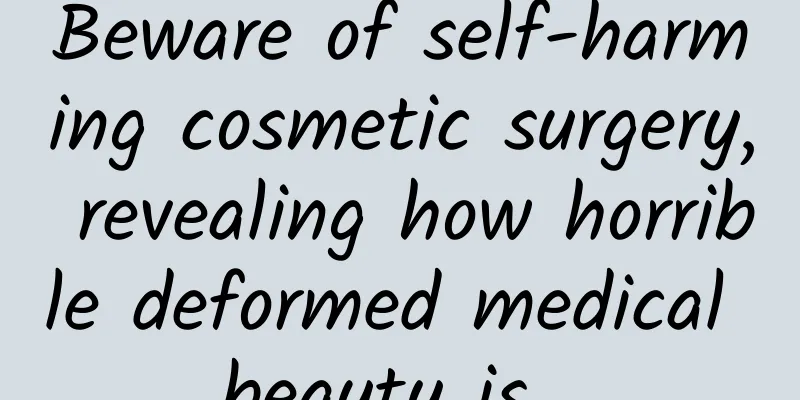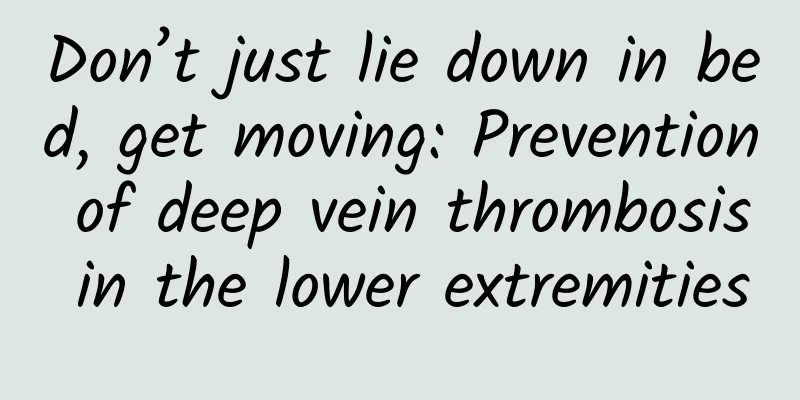Understand chronic sinusitis and win the battle to protect your nasal cavity!

|
Author: Xia Jiao, deputy chief physician, Beijing Friendship Hospital, Capital Medical University Reviewer: Liu Yuhe, Chief Physician, Beijing Friendship Hospital, Capital Medical University What do you think of when you think of chronic sinusitis? Is it the lingering headache, the pus-filled mucus that never goes away, or the recurring nasal congestion and the gradual loss of sense of smell? This article will take you to a deeper understanding of this disease that troubles millions of people and explain the scientific countermeasures. Rethinking the sinuses: a multifunctional air-conditioning room in the skull The so-called "sinus" is a cavity. The sinuses are cavities in the skull that connect to the nasal cavity. They were once considered to be appendages of the nasal cavity, so they were also called paranasal sinuses. Humans have 4 pairs of 8 sinuses, namely the frontal sinus deep in the eyebrow arch, the ethmoid sinus between the eye sockets, the maxillary sinus below the eye sockets, and the sphenoid sinus deep behind the eyeball. Figure 1 Original copyright image, no permission to reprint The sinuses are like many small rooms hidden in our skulls. These rooms are surrounded by bone walls and covered with a thin layer of mucous membrane like wallpaper. Each room drains to the nasal cavity through a small drainage port. The nasal cavity and sinuses are important parts of the upper respiratory tract. Don't underestimate these small rooms, they are multifunctional air-conditioning rooms in the head, which can significantly reduce the weight of the head, amplify and modify our pronunciation, heat and humidify the inhaled air, and act as "airbags" in the event of a violent collision to protect important organs such as the eyes and brain. The sinuses are part of the upper respiratory tract. When the upper respiratory tract is infected or has an allergic reaction, the sinus mucosa becomes edematous, the drainage channel from the sinuses to the nasal cavity is blocked, and the secretions cannot be discharged smoothly, further irritating the mucosa and causing edema and even the formation of polyps. The vicious cycle aggravates sinus inflammation. If this inflammation persists for more than 3 months, it is chronic sinusitis. Four major symptoms of sinusitis Purulent discharge: a warning sign of sinus inflammation When the sinuses are inflamed, the sinus mucosa swells and secretes a large amount of inflammatory secretions. At the same time, a large number of immune cells arrive at the site of inflammation. The aftermath of the battle causes pus and mucus to accumulate in the sinus cavity, and the sinus opening is blocked. These pus and mucus cannot be discharged smoothly, just like sewage trapped in the sewer, so there is always endless mucus in the nasal cavity. Some patients have mucus flowing back into the throat, causing discomfort. Headache: A barometer of stress changes In case of sinusitis, the sinus opening is blocked, and the pus and mucus accumulate in the sinus cavity. The pressure in the sinus cavity is getting higher and higher, which stimulates the nerve endings of the sinus wall mucosa and causes pain. Headaches occur not only when the sinus cavity pressure is high, but also when the sinus opening is blocked, the gas exchange in the sinus cavity stops completely, and the pus and mucus in the sinus are slowly discharged under the action of gravity, gradually forming negative pressure in the sinus cavity, inducing more severe vacuum headaches. Sinus inflammation in different parts of the body causes pain in different areas, so the location of the pain will also indicate the location of the lesion. For example, forehead pain often indicates frontal sinusitis, cheek pain is often maxillary sinusitis, and deep headaches or pain in the back of the head may be caused by sphenoid sinus lesions. Nasal congestion and decreased sense of smell: Sinusitis affects the nasal cavity as well The pus discharged from sinusitis can irritate the nasal mucosa and cause it to swell. The nasal airway becomes narrow and the pus that is difficult to blow out blocks the already narrow passage, making nasal congestion inevitable. In severe cases, the bone wall of the sinus collapses into the nasal cavity under tremendous pressure, making nasal congestion more severe. Our sense of smell is distributed in a narrow channel called the olfactory fissure near the midline between the two eyes. When purulent mucus, swollen mucosa or even polyps block the channel, odor molecules cannot reach the olfactory area, and the sense of smell is significantly reduced. Some sinusitis lesions are mainly concentrated near the olfactory area. Severe swelling of the mucosa directly leads to olfactory nerve dysfunction, and the sense of smell is also increasingly reduced. The cross-border threat of sinusitis: Infection spreads to the orbit and cranium The sinuses, eye sockets and skull base are neighbors. When sinusitis is severe, the war may cross the border to affect the eye sockets and the skull. Sinusitis can cause periorbital and intraorbital infections, which can cause eyelid swelling and pain, restricted eye movement, and even a sharp decrease in vision or blindness. Infections in the skull base or intracranial area can cause severe headaches, fever, nausea and vomiting, and even involve important nerves and cause symptoms of neurological dysfunction. Is there no cure for recurring sinusitis? The main reason why sinusitis is so annoying is that it keeps coming back. So is there nothing we can do about it? To control sinusitis, we must first find the cause of its recurring attacks. Adenoids hypertrophy: the culprit behind recurrent sinusitis in children Adenoids are lymphatic tissue located in the nasopharynx at the back of the nasal cavity. We have all heard that enlarged adenoids can affect the development of children's maxillofacial area and lead to "adenoid facies". But its other major harm is that it blocks the posterior nasal cavity and causes repeated acute attacks of sinusitis in children. If parents find that their children have purulent nasal discharge when they catch a cold, and it takes half a month to get better, and it starts again within half a month after it gets better this time, they must take their children to check their adenoids. For such children, adenoidectomy is an important means of treating recurrent sinusitis. Figure 2 Original copyright image, no permission to reprint Dental infection: unexpected cross-border damage The maxillary sinus and the upper alveolar bone are separated by only a wall. Our upper teeth grow on the bone at the bottom of the maxillary sinus. If the tooth root infection penetrates the alveolar bone, it will cause maxillary sinusitis. This type of odontogenic sinusitis often has obvious nasal odor. When treating sinusitis, it is necessary to treat the affected teeth at the same time. Otherwise, the sinusitis will not heal, and the destruction of the sinus floor bone will become more and more serious, and even lead to the formation of fistulas between the mouth and the maxillary sinus. Therefore, if the otolaryngologist recommends that you go to the dentistry department for treatment at the same time, don't think that the doctor is shirking your responsibility. Fungal infection: It's not really athlete's foot that grows in the sinuses Fungal sinusitis is caused by the reproduction of fungi in the sinuses. Antibiotics are ineffective for this type of sinusitis. Antifungal treatment alone has little effect and significant side effects. When conventional drug treatment for sinusitis is ineffective or recurs, a sinus CT scan is required. Patients suspected of fungal sinusitis through typical imaging findings need to undergo surgical treatment to remove the fungal masses in the sinus cavity. There have been rumors that smelly socks can cause fungal sinusitis. In fact, the pathogenic fungi of these two diseases are completely different. There may be fungal spores or hyphae in every breath of air we breathe. If the fungi enter the sinuses and are not expelled in time, they may colonize locally and cause disease, especially for perimenopausal elderly women or diabetic patients, because the local environment of the sinus cavity is suitable for fungal growth, they are more likely to get fungal sinusitis. Structural abnormalities: inherent disadvantages The sinuses are connected to the nasal cavity only through narrow sinus openings. If the patient's nasal cavity structure is abnormal and affects the already narrow drainage channel, it may also cause repeated attacks of sinusitis. For example, if the nasal septum is deviated or the middle turbinate develops into a cavitary shape, it may cause the middle nasal meatus to be obstructed from drainage, or if the ethmoid sinus air cells are overdeveloped and occupy the drainage channels of the frontal sinus, maxillary sinus or sphenoid sinus. Endoscopic surgery to correct these anatomical abnormalities can break the curse of recurrent sinusitis. Allergic constitution: a difficult immune overreaction For patients with sinusitis accompanied by allergic rhinitis or asthma, infection is often not the main cause of recurrent inflammation. In such patients, there are often a large number of eosinophils in the lesioned sinus tissue, which dominate an inflammation that is very easy to recur. For such patients, even surgery cannot prevent the return of inflammation. Just like asthma patients need long-term inhaled hormone treatment, such patients often need long-term use of nasal spray hormones to control mucosal inflammation. The purpose of surgery is to provide a channel for long-term sinus drug treatment. In recent years, with the development of precision medicine, targeted biological agents represented by omalizumab (anti-IgE), dupilumab (anti-IL-4/IL-13) and mepolizumab (anti-IL-5) have brought new hope to patients with refractory chronic sinusitis with nasal polyps. At present, these three types of monoclonal antibodies have been approved by the US FDA and the European EMA for this indication. Clinical research data show that they have significant therapeutic effects: about 60%-75% of patients have a reduction of nasal polyps by ≥50%, the olfactory score is improved by 2-3 levels, and the total nasal symptom score (SNOT-22) is reduced by an average of more than 30 points. my country's drug administration has included the new indications of chronic sinusitis with nasal polyps for omalizumab and dupilumab in the priority review list, and it is expected that the localization approval will be completed around 2026. It should be noted that although biological agents can effectively control the condition, this type of chronic sinusitis cannot be completely cured and still requires a step-by-step treatment plus long-term management strategy: biological agents combined with nasal hormone shock therapy are recommended in the acute phase, and maintenance doses should be used continuously in the remission phase in conjunction with nasal irrigation, etc. This has a similar logic to the step-by-step treatment and long-term management model for asthma patients - only through regular nasal endoscopic evaluation, serum IgE monitoring, and medication compliance management, can doctors and patients work together to build an individualized treatment plan to achieve long-term peace. In general, sinusitis is a general term for a large category of diseases. The treatment methods and effects of different subtypes vary greatly. We should neither underestimate it nor be afraid of it. Through scientific cognition and systematic management, even in the face of stubborn chronic sinusitis, we can regain the freedom to breathe fresh air! |
<<: Do not underestimate nasal congestion and hyposmia: Clinical warning of occult nasal tumors
Recommend
How long does it take to cure a positive gonorrhea infection?
Gonorrhea is a very frightening sexually transmit...
Symptoms of low estrogen
If the estrogen level is low, it will be detrimen...
The pregnancy test stick shows one dark line and one light line
Pregnancy test sticks are used to test whether a ...
Workers who sit for a long time may suffer from cardiopulmonary embolism
Real points: Young people who sit for long period...
What to do with watery purulent leucorrhea
Leucorrhea is a sticky white liquid that flows ou...
What to use to wash women's underwear
It is best not to use the same detergent to clean...
What are the common mistakes we make when dealing with infant convulsions?
After the winter solstice, the coldest days of th...
Can pregnant women eat snacks like biscuits?
What kind of cookie snacks should pregnant women ...
Causes of 12mm uterine rectal effusion
Uterine effusion is also a gynecological disease....
What is the reason for heavy menstrual bleeding?
Menstruation is one of the physiological characte...
For people with diabetes, how can metformin be used in combination with other hypoglycemic drugs?
A friend asked Huazi how to use hypoglycemic drug...
Why does regular teeth cleaning cost 200, but deep teeth cleaning costs 2000?
The following conversation actually took place: —...
eMarketer: WeChat is unlikely to become a marketing tool for international companies in China
199IT original compilation Last week, a group of ...
Popular Science | If a child has myopia in only one eye, does he need to not wear glasses?
"My child has normal vision in one eye and m...
Difficulty falling asleep, frequent dreams and waking up easily? These foods can help you sleep well
What should I do if I have difficulty falling asl...









